Imagine trying to build a giant puzzle, but you only have a few pieces, and some of those pieces are broken or faded. That's a bit like how we've built our understanding of history. We've taken bits and pieces – stories people told, old books, artwork, and things dug up from the ground – and tried to fit them together. But sometimes, we forced those pieces to fit into a picture we already had in our minds, rather than letting the pieces create their own picture. It's like pouring concrete into a mold, solidifying a shape regardless of whether it's truly accurate.
Think of it like this: if a piece of information didn't match our existing beliefs, we might just ignore it or sweep it under the rug. We were often in a hurry to create a complete story, so we skipped the hard work of investigating and verifying. This led to a history that's a mix of truth and fiction. And as we discover new things, the old, incorrect information often gets pushed aside, sometimes even lost.
It's time to change that. We need to replace the flawed stories we've told ourselves with accurate knowledge, gained through careful and thorough research. We need to be willing to question everything, even the things we think we know for sure.
The good news is, we're living in a time of incredible discovery. We're learning more about the universe, science, technology, geography, and space than ever before. This new knowledge is helping us to challenge old myths and false claims. For example, we now understand the complexities of space travel and how spacesuits are designed to withstand extreme environments. We enjoy the vibrant colors of our televisions, something unimaginable just a few decades ago. We know that light has a speed, a concept that was once debated and misunderstood.
To make new discoveries today, we can't just rely on old methods. We need to think differently. Simply unearthing an artifact and creating a story around it is no longer sufficient. We must integrate insights from various fields of study, such as archaeology, anthropology, genetics, linguistics, and climate science. Let's delve into some practical advice:
- Cross-Disciplinary Approach: When analyzing historical artifacts or texts, involve experts from multiple fields. For example, if you find an ancient tool, consult not only archaeologists but also materials scientists to determine its composition and potential uses, and anthropologists to understand the cultural context.
- Critical Evaluation of Sources: Always question the source of information. Who created it, and what was their motivation? Consider potential biases and limitations. Compare multiple sources to get a more complete picture.
- Technological Advancements: Utilize modern technology to enhance research. Carbon dating, DNA analysis, and satellite imagery can provide valuable insights that were previously unavailable.
- Embrace New Perspectives: Be open to challenging established theories and interpretations. Encourage diverse viewpoints and perspectives, especially from marginalized communities whose voices have often been excluded from historical narratives.
- Ongoing Research and Revision: History is not static. New discoveries and interpretations are constantly emerging. Be prepared to revise existing narratives as new evidence comes to light.
- Transparency and Accessibility: Share research findings with the public in a clear and accessible way. Promote open access to data and resources to encourage further investigation and debate.
- Contextual Understanding: Don’t just look at the object or the event, look at the whole picture. What was the climate, social structure, and economy of the time? Understanding the context is crucial for accurate interpretation.
- Ethical Considerations: When conducting research, particularly archaeological excavations, prioritize ethical considerations. Respect cultural heritage and ensure that research is conducted in a responsible and sustainable manner.
Let's consider some examples that challenge our thinking. The discovery of Göbekli Tepe in Turkey, a site with massive stone structures dating back to 10,000 BCE, has revolutionized our understanding of the origins of civilization. It suggests that complex societies existed thousands of years earlier than previously thought, challenging the traditional view of a linear progression from hunter-gatherer to agricultural societies. The existence of these structures suggests a level of organization and technological sophistication that was previously thought impossible for that period. This example illustrates how archaeological discoveries can force us to reassess our assumptions about the past.
Another example is the study of ancient DNA. Genetic analysis of human remains has revealed surprising connections between different populations and has shed light on migration patterns and genetic diversity. For instance, the discovery of Denisovans, a previously unknown group of archaic humans, has challenged our understanding of human evolution. DNA analysis has also revealed that modern humans carry traces of Neanderthal DNA, suggesting interbreeding between these two groups. This type of research highlights the power of scientific advancements in rewriting our understanding of the human story.
The understanding of the Maya civilization has also been dramatically altered by the deciphering of their hieroglyphic writing. For a long time, the Maya were thought to be a peaceful, astronomical society. However, the decipherment of their writing revealed a complex and often violent society with a rich history of warfare and political intrigue. This example demonstrates how the interpretation of historical records can change as we gain access to new information and perspectives.
The history of climate change is also being rewritten as we gain a better understanding of past climate patterns. Ice core samples, tree rings, and sediment analysis provide valuable data about past climate conditions. This data is helping us to understand the natural variability of the climate and to distinguish between natural and human-caused climate change. This research is crucial for understanding the present climate crisis and for developing strategies to mitigate its effects.
We must acknowledge the limitations of our current knowledge and be willing to revise our understanding of the past as new evidence emerges. We must move away from the idea of a fixed and unchanging history and embrace a dynamic and evolving understanding of the past. By adopting a critical and interdisciplinary approach to historical research, we can create a more accurate and comprehensive picture of our shared past, and apply those lessons to better our future.
Imagine stumbling upon ancient maps, not just scribbles on parchment, but detailed depictions of coastlines, mountains, and rivers. That's exactly what happened in the early 1700s when Admiral Piri Reis's maps surfaced. These weren't your average maps; they held secrets that continue to baffle experts today.
Initially, these maps, one showing the Mediterranean and another the Dead Sea region, were handed to an American cartographer, Arlington H. Mallerey. He confirmed their accuracy, but something was off: the locations were slightly askew. To get a better understanding, Mallerey enlisted the help of another cartographer, Mr. Walters. They did something simple yet revolutionary: they pasted the map onto a globe. And that's when the magic happened. Suddenly, the misplaced locations snapped into place, revealing a map of incredible precision.
But it wasn't just about getting the locations right. These maps were packed with detail. They showed mountains, peaks, islands, rivers, and other geographical features, all drawn with remarkable accuracy. Think of it like finding a modern satellite image from centuries ago. How could someone back then have such detailed knowledge of the world?
The story doesn't end there. In 1957, the maps landed in the hands of Jesuit Father Lineham, the head of the Weston Observatory and a cartographer for the U.S. Navy. His analysis was even more astounding. He confirmed the maps' precision and pointed out something extraordinary: they showed land that is now hidden under ice. This suggests that the maps were created when those areas were ice-free, potentially thousands of years ago.
Professor Charles H. Hapgood and mathematician Richard W. Strachan added another layer of intrigue. They suggested that the maps looked like they were drawn from a bird's-eye view, as if taken from a great height. To achieve this level of detail, someone would have needed an aircraft, flying high above Cairo, to capture aerial photographs. The maps even showed a clear center and blurred edges, exactly what you'd expect from a high-altitude image.
Let's unpack these findings and explore their implications. What does it mean if ancient civilizations had the ability to create such accurate maps, possibly using advanced surveying techniques or even aerial views?
First, the sheer accuracy of the maps suggests a level of geographical knowledge that we typically associate with modern technology. Think about the challenges of mapping without GPS, satellites, or even accurate chronometers. Early cartographers relied on basic tools like compasses, sextants, and lead lines. To achieve the precision found in the Piri Reis maps, they would have needed sophisticated surveying techniques, potentially including triangulation and astronomical observations.
Practical Advice: When studying old maps, always consider the tools and techniques available to the cartographers. Try to understand the limitations they faced and appreciate the ingenuity they displayed in overcoming those limitations. For instance, try to recreate basic surveying techniques such as using a compass and measuring distances with paced steps. This provides a hands on appreciation for the effort involved.
Second, the detail of the maps, particularly the depiction of now-submerged coastlines, raises questions about ancient sea levels and climate change. If the maps accurately show land that is now under ice, it implies that they were created during a period when those areas were ice-free. This could mean that ancient civilizations witnessed significant climate shifts and sea-level changes, potentially thousands of years ago.
Relevant Insights: The study of paleoclimatology, which focuses on reconstructing past climates, provides valuable context. Ice core samples, sediment layers, and fossil records can reveal information about past temperatures, sea levels, and climate patterns. Comparing these findings with the details on the Piri Reis maps can offer insights into the timing and extent of past climate changes.
Practical Advice: Explore paleoclimatology resources, such as reports from the Intergovernmental Panel on Climate Change (IPCC) and research papers on ancient sea levels. This can help you understand the scientific evidence supporting the idea of significant climate changes in the past.
Third, the suggestion that the maps were created from an aerial perspective is perhaps the most intriguing. It challenges our understanding of ancient technology and raises the possibility that civilizations may have possessed advanced capabilities that we haven't fully recognized. While the idea of ancient aircraft might seem far-fetched, it's worth considering the possibility that other surveying methods, such as using high vantage points or hot air balloons, could have been employed.
Example: Consider the Nazca Lines in Peru, massive geoglyphs that are best viewed from the air. While their purpose remains a mystery, their existence suggests that ancient cultures may have had a sense of aerial perspective, even if they didn't possess actual aircraft.
Detailed Discussion: The concept of ancient aerial surveying requires a careful examination of the evidence. While the Piri Reis maps suggest an aerial viewpoint, it's essential to consider alternative explanations. For example, the maps could have been compiled from multiple sources, each providing different pieces of information. The apparent aerial perspective could be a result of combining these different sources into a single map.
Practical Advice: Approach claims of ancient advanced technology with a critical eye. Always consider alternative explanations and look for supporting evidence. Engage with skeptical perspectives and learn to evaluate the strength of different arguments.
Fourth, the maps' existence raises questions about the transmission of knowledge. How did this information survive for centuries, even millennia, to be discovered in the 18th century? The maps could have been part of a larger body of knowledge that was lost or hidden over time. They might represent a fragment of a more advanced civilization or a network of knowledge that spanned continents.
Relevant Insights: The study of ancient libraries and knowledge centers, such as the Library of Alexandria, provides insights into the preservation and transmission of knowledge in the ancient world. Understanding how information was stored, copied, and disseminated can help us appreciate the challenges of preserving knowledge over long periods.
Practical Advice: Explore the history of ancient libraries and knowledge centers. Learn about the methods used to preserve and transmit information, such as papyrus scrolls, clay tablets, and codices. This can provide a deeper appreciation for the fragility of knowledge and the importance of preserving it.
The Piri Reis maps are more than just historical artifacts. They are a window into the past, challenging our assumptions and prompting us to reconsider our understanding of ancient civilizations. By examining these maps, we can gain insights into the geographical knowledge, technological capabilities, and climate awareness of our ancestors. These maps encourage us to embrace curiosity, ask questions, and explore the mysteries of our past.
Unraveling Ancient Mysteries: Maps, Lines, and Stones
Imagine finding maps drawn with incredible accuracy, depicting lands far beyond the known world of their time. Or consider vast, intricate lines etched into the desert floor, visible only from the sky. These aren't fantasy stories; they're real mysteries left behind by ancient civilizations, prompting us to question what we truly know about our past.
The Enigmatic Maps
Let's start with the old maps. These weren't hand-drawn in the traditional sense. They were created using a camera, and not just any camera, but one that could capture images from a significant height, suggesting aerial photography long before airplanes. The fact that these maps were copies of originals implies a sophisticated system of knowledge transfer and preservation. Think about it: creating accurate maps from an aerial view requires an understanding of perspective, measurement, and possibly even a form of flight. How did they achieve this?
Practical Advice: When studying ancient maps, consider the tools and techniques that might have been available. Look beyond the surface and ask: What kind of technology would be needed to create this? How might they have measured distances and angles? Comparing these maps with modern cartographic principles can reveal surprising similarities and highlight the advanced knowledge of these ancient cartographers.
The Nazca Lines: A Puzzle in the Desert
Moving to the Peruvian Andes, we encounter the Nazca Lines, a network of enormous geoglyphs carved into the desert floor. These lines, some running parallel, others intersecting, and still others forming intricate shapes, are a testament to the scale of human effort. The term "Inca roads" is often used, but these are no ordinary roads. They don't seem to lead anywhere in a practical sense. Their visibility only from the sky adds another layer of mystery. Were they meant for the gods? Were they part of a complex astronomical calendar? Or did they serve a purpose we can't even imagine?
Practical Advice: When exploring the Nazca Lines, consider the environmental context. The dry, stable climate of the Nazca region helped preserve these geoglyphs. Imagine the labor involved in removing the reddish pebbles to expose the lighter earth beneath, creating lines that stretch for miles. Think about the potential for using simple surveying techniques, like ropes and stakes, to create such precise designs.
Additional Points:
- The sheer scale of the Nazca Lines suggests a highly organized society with a strong sense of purpose.
- The variety of figures, including animals, plants, and geometric shapes, hints at a rich symbolic language.
- Some researchers believe the lines may have been used for ritualistic processions or water-related ceremonies.
The Bay of Pisco: A Cliffside Enigma
Further along the Peruvian coast, we find the Bay of Pisco, where massive images are carved into a towering red cliff, visible from twelve miles out at sea. These figures, like the Nazca Lines, raise the question: Why create something so large and visible only from a distance? The effort involved in carving such images on a vertical cliff face is staggering. It suggests a deep understanding of perspective and a commitment to creating something that could be seen from afar.
Practical Advice: When considering the Bay of Pisco, think about the challenges of working on a vertical surface. How did they transport materials and tools? How did they maintain accuracy at such a large scale? Consider the possibility of using scaffolding or ropes to access the cliff face.
The Search for Meaning: Theories and Speculations
The lack of definitive answers has led to numerous theories, some more plausible than others. The idea that these lines and images were part of a sophisticated calendar system is compelling. The alignment of certain lines with astronomical events suggests a deep understanding of the cosmos. The possibility of a coordinate system, perhaps used for navigation or surveying, also warrants consideration.
Relevant Insights:
- The concept of a "sky calendar" is found in many ancient cultures, suggesting a universal human interest in tracking celestial events.
- The precision of the Nazca Lines suggests a level of mathematical and engineering knowledge that is often underestimated.
- The placement of the Bay of Pisco figures, visible from the sea, suggests a connection to maritime activities or beliefs.
Tiwanaku: A City of Stone and Mystery
Moving to Tiwanaku, a city high in the Andes, we encounter another set of mysteries. The sheer scale of the stonework, with massive blocks weighing hundreds of tons, is awe-inspiring. The intricate carvings, the precise alignment of stones, and the strange, otherworldly appearance of the city all point to a sophisticated civilization with advanced engineering skills.
Practical Advice: When studying Tiwanaku, consider the challenges of working at such a high altitude. The thin air and harsh climate would have made construction incredibly difficult. Think about the logistics of transporting and lifting such massive stones. Examine the tools and techniques that might have been used, such as levers, ramps, and rollers.
Detailed Discussion:
- The Monolithic Gate of the Sun, carved from a single block of stone, is a masterpiece of ancient craftsmanship. The intricate carvings on the gate may represent astronomical or calendrical information.
- The strange stone heads found in Tiwanaku suggest a culture with a rich symbolic language and a fascination with different forms of life.
- The discovery of a large red sandstone with astrological symbols hints at a deep understanding of celestial mechanics and a possible connection to ancient satellite theories.
- The idea of a pre-existing satellite captured by the earth, as suggested by ancient texts and stone carvings, opens up a wide array of questions. Could this explain global catastrophies? Or shifts in the earth’s axis?
The Search Continues
Despite decades of research, the true purpose of these ancient mysteries remains elusive. The lack of definitive answers should not discourage us from exploring these sites. Instead, it should inspire us to ask new questions, develop new theories, and continue the search for knowledge.
Additional Points:
- Interdisciplinary research, combining archaeology, astronomy, geology, and other fields, may lead to new insights.
- The use of modern technology, such as lidar and satellite imagery, can help reveal hidden features and patterns.
- Engaging with local communities and incorporating their knowledge and perspectives can provide valuable insights.
The most important thing is to keep an open mind and to be willing to consider all possibilities. The answers may be hidden in plain sight, waiting for us to see them with new eyes.
Imagine sitting around a crackling fire, listening to the tales of elders, their voices weaving stories of a time long past. In this case, the stories center around ancient cities, whispers of otherworldly visitors, and feats of engineering that defy modern understanding. The focus? Tiahuanaco and Sacashuaman, places where the past seems to whisper secrets to those willing to listen.
One legend, recounted by those who have lived long and seen much, speaks of a golden spacecraft descending from the heavens. From this craft emerged a woman named Oryana, a being with four connected fingers. Her mission, as she claimed, was to seed life on Earth. She bore seventy children and then vanished, leaving behind a legacy that continues to puzzle researchers. This story, though seemingly fantastical, finds a strange echo in the ancient drawings of four-fingered beings found in Tiahuanaco. Is it a mere myth, or a distorted memory of a reality we can no longer grasp?
Tiahuanaco itself is a riddle wrapped in stone. Archaeologists, through soil analysis, suggest the city is roughly 3,000 years old. This, however, feels like a superficial glance. It's like judging a book by its cover. A deeper dive is required. What were the social structures? What was their understanding of astronomy? How did they manage their resources? These questions remain largely unanswered. We need more than just soil samples; we need comprehensive, interdisciplinary research. Imagine using advanced technologies like ground-penetrating radar, 3D laser scanning, and isotopic analysis to map the city and understand its layers of history. This would provide a more complete picture, revealing the true complexity of this ancient civilization.
Consider the practical aspect: funding. Archaeological sites often suffer from a lack of resources. Governments and private organizations need to recognize the importance of these sites as repositories of human history. Investing in thorough research is not just about satisfying curiosity; it's about understanding our past to inform our future. Tourism also needs to be managed sustainably, ensuring the sites are preserved for future generations.
Then there's Sacashuaman, a fortress of immense stones, a testament to the sheer ingenuity of its builders. How did they move and precisely place stones weighing hundreds, even thousands, of tons? The sheer scale of the construction is mind-boggling. It's not just the weight; it's the precision. The stones fit together so perfectly that not even a knife blade can slip between them. This level of craftsmanship suggests a deep understanding of engineering, a mastery of materials that we are still trying to understand.
Let's break down the practical challenges. Moving such massive stones would require a sophisticated understanding of leverage, pulleys, and possibly even advanced forms of transportation. Imagine using rollers made of hardwood, or employing large teams of workers to pull the stones along prepared pathways. But even with these techniques, the sheer scale of the undertaking is staggering. It suggests a highly organized society, capable of coordinating vast resources and labor.
The single, massive stone structure encountered on the way back from Sacashuaman adds another layer of mystery. This inverted stone, with its grooves and holes, defies easy explanation. The fact that it's upside down suggests a deliberate placement, a purpose that we can only speculate about. Was it a ritual object? A component of a larger structure? Or perhaps a tool, used for some unknown industrial process?
The holes, angled in various directions, could have served as anchor points for ropes or levers. They might have been used for astronomical observations, aligning with celestial events. The grooves could have been used for channeling liquids or gases. The possibilities are endless, but without further research, they remain just that: possibilities.
The idea that these structures were built with the aid of machines is not as far-fetched as it might seem. Consider the level of precision involved. Modern construction techniques often rely on sophisticated machinery to achieve similar results. Could ancient civilizations have possessed similar technologies, now lost to time? It's a question that challenges our assumptions about the past.
Tiahuanaco's artificial hills and mountains further illustrate the sophistication of this ancient culture. They suggest a deliberate shaping of the landscape, a desire to create a specific environment. This level of environmental engineering is remarkable, especially considering the tools and resources available at the time. It highlights a deep understanding of geology and hydrology.
In today's world, we pour vast sums of money into technological innovation. But perhaps, as the elders suggest, we are simply rediscovering knowledge that was already known to our ancestors. Ancient texts speak of powerful weapons, capable of unimaginable destruction. Are these just myths, or do they hold a kernel of truth? The search for these lost technologies is not just a quest for historical artifacts; it's a search for knowledge that could potentially reshape our understanding of science and engineering.
Imagine the implications of rediscovering ancient technologies. Could they provide solutions to modern problems? Could they offer new sources of energy, or new ways to build sustainable cities? The possibilities are tantalizing. But the key lies in approaching these ancient sites with a sense of humility and respect, recognizing that they hold valuable lessons for us.
The stories of the elders are not just tales; they are fragments of a lost history, waiting to be pieced together. By combining the wisdom of the past with the tools of the present, we can unlock the secrets of Tiahuanaco and Sacashuaman, and gain a deeper understanding of our own place in the grand tapestry of human history. We need to be open to the possibility that our understanding of the past is incomplete, and that the answers we seek may lie hidden in the stones of these ancient cities.
Practical advice for exploring these sites: always hire a local guide. They often possess knowledge that goes beyond textbooks and can provide insights into the cultural significance of the sites. Be respectful of the environment and the local communities. Avoid touching or removing any artifacts. Take plenty of photos, but remember to experience the sites with your own eyes, to feel the weight of history beneath your feet. And most importantly, listen to the stories of the elders. They are the keepers of the past, and their voices deserve to be heard.
The story of the Sumerians is one of the most captivating mysteries in human history. Imagine a people, flourishing thousands of years ago in what is now modern-day Iraq, who seemingly appeared out of nowhere with a fully developed civilization. They were the first to leave us written records, a gift that allows us to peer into their world, albeit with many unanswered questions.
One of the biggest puzzles is their origin. Where did they come from? We simply don't know. There are no clear precursors, no gradual development from a simpler culture. They arrived, seemingly fully formed, with sophisticated agriculture, complex urban planning, a written language, and advanced mathematics and astronomy.
Their intelligence is undeniable. They weren't just farmers and builders; they were meticulous observers of the cosmos. Their astronomical observations, particularly their calculations of the Moon's movements, are astoundingly accurate, differing from modern measurements by a mere fraction of a second. Think about that: without telescopes or modern instruments, they achieved a level of precision that still amazes us.
Furthermore, their mathematical prowess was remarkable. They could handle calculations involving up to 15 digits, a feat far surpassing the capabilities of later civilizations like the Greeks, who struggled with numbers beyond five digits. This suggests a deep understanding of mathematical principles, a level of sophistication that is hard to explain given the time period.
Their religious beliefs are equally intriguing. They placed their gods on the highest points, literally and metaphorically. Where natural mountains were absent, they built monumental structures like ziggurats, artificial mountains that served as temples and symbols of their devotion. These ziggurats were massive undertakings, requiring immense organization and engineering skill. The sheer scale of these projects speaks to the power and influence of their religious beliefs.
The Sumerian king list, a document that records their rulers, is another source of fascination and debate. It lists kings who reigned for incredibly long periods, some for tens of thousands of years, even hundreds of thousands. While these numbers are likely symbolic or mythological, they highlight the Sumerians' perception of time and their connection to their history. It's important to approach these claims with a critical mind. It is possible that the unit of time was different, or that the lists were designed to express a mythic or symbolic meaning, rather than a literal one.
The sudden appearance of the Sumerians is compounded by their equally mysterious disappearance. After centuries of dominance, their civilization declined, eventually being absorbed by other cultures. What happened? Did they migrate? Did their society collapse due to internal strife or environmental factors? Or, as some speculate, did they leave, perhaps returning to a place they came from?
The idea of them returning to their "home planet" is a tantalizing one, fueled by interpretations of ancient texts and artifacts. While this remains highly speculative, it's undeniable that the Sumerians possessed knowledge that seems beyond their time. Their depictions of celestial bodies, with stars surrounded by planets, suggest an understanding of the solar system that is difficult to explain without sophisticated observation tools. How did they know planets revolved around stars? This question remains a significant point of debate.
The archaeological record adds further layers to the mystery. Discoveries like the 6,000-year-old circular engravings, the 40,000-year-old mine of luminous stones at Gar Kobeh, and the artifacts found in Baradostian, Tepe Asiab, Karim Shahir, Barda Balka, and the Shanidar Caves, all point to a long and complex history in the region. The findings of fossils that do not belong to humans, if verified, would add another layer of complexity to the region's history.
It's important to approach these discoveries with a scientific mindset. Carbon dating, for example, provides valuable information about the age of artifacts, but it's crucial to consider the limitations of this method. Interpretations of ancient artifacts and texts can also be subjective, influenced by our own biases and assumptions. It is vital that we are open to new understandings, but also critical of extraordinary claims.
The presence of statues with elongated heads and unusual facial features raises questions about their origins and the people they represent. While it's tempting to speculate about extraterrestrial origins, it's equally important to consider other possibilities. Perhaps these statues represent a specific group of people with distinct physical characteristics, or perhaps they are symbolic representations of deities or mythical figures.
Instead of focusing on the "alien" angle, it is more productive to consider the possibility that the Sumerians were a highly advanced civilization that developed unique knowledge and technologies. They may have had access to lost knowledge or developed methods of observation that we no longer understand. This would explain their advanced astronomy and mathematics without resorting to extraterrestrial explanations.
Practical Advice:
- Critical Thinking: When encountering claims about ancient civilizations, especially those involving extraterrestrial origins, it's essential to approach them with critical thinking. Ask yourself: What is the evidence? Are there alternative explanations?
- Research: Dive deeper into the available research. Look for scholarly articles and books that provide evidence-based analysis of Sumerian civilization.
- Archaeological Context: Understand the context in which artifacts are found. Where were they discovered? What other artifacts were found nearby? This information can provide valuable insights into their meaning and significance.
- Consider Multiple Perspectives: Be open to different interpretations of the evidence. There is no single "correct" answer to the mystery of the Sumerians.
- Support Scientific Inquiry: Encourage and support scientific research into ancient civilizations. Funding for archaeology and anthropology is crucial for uncovering new evidence and deepening our understanding of the past.
- Visit Museums: If possible, visit museums that house Sumerian artifacts. Seeing these objects firsthand can provide a deeper appreciation for their craftsmanship and cultural significance.
- Learn Ancient Languages: The ability to read ancient Sumerian texts is invaluable to understand their culture. Consider studying cuneiform writing.
- Understand the Importance of Context: A single artifact removed from its archaeological context loses much of its value. Consider the location, layer of earth, and other items found nearby.
- Be aware of pseudoscientific claims: Many people use the Sumerians to push agendas. Always check the legitimacy of sources.
- Support ethical archaeological practices: Avoid buying or supporting the trade of looted artifacts.
In conclusion, the Sumerians remain one of the most fascinating and enigmatic civilizations in human history. Their sudden appearance, their advanced knowledge, and their mysterious disappearance continue to intrigue and puzzle us. While we may never fully unravel their secrets, their legacy serves as a reminder of the vastness of human history and the enduring power of human ingenuity. By approaching their story with a combination of curiosity and critical thinking, we can continue to learn from their remarkable achievements and gain a deeper understanding of our own past.
Imagine stumbling upon a piece of metal that defies rust, a battery from thousands of years ago, or a fabric that seems impossibly advanced for its time. These aren't scenes from a science fiction movie; they're real discoveries that challenge our understanding of history. The question is, could these artifacts suggest that our planet was visited by beings from another world, or that ancient civilizations possessed knowledge far beyond what we currently believe?
Let's unpack some of these intriguing findings. In Lebanon, researchers have found glass-like rocks with traces of radioactivity. What's even more puzzling is that similar artifacts, made of Cesium Oxide—a compound requiring sophisticated chemical processing—have been unearthed in Iran and Egypt. How did ancient people, supposedly without advanced chemistry, create such materials?
Then there's the cloth found at Helwan, Egypt. It's incredibly old, yet its weave and quality resemble modern fabrics produced by high-tech machines. How did ancient people achieve such precision? In Baghdad, a battery dating back thousands of years sits in a museum. This "Baghdad Battery" suggests that ancient people might have understood electricity much earlier than we thought. In the Kohistan region of Asia, rock carvings depict constellations with a precise alignment between Venus and Earth, a level of astronomical accuracy that's astonishing for that era. And in Peru, platinum jewelry thousands of years old has been discovered. Platinum's high melting point (1800°C) makes it incredibly difficult to work with, even with modern technology. How did ancient Peruvian artisans achieve this?
India's Qutub Minar features an iron pillar that stands as a testament to ancient metallurgical skill. It hasn't rusted in centuries, a feat that modern metallurgy struggles to replicate. The composition of this iron remains a mystery. Then there are crystal lenses, precise star maps, and the ancient Chinese production of aluminum—a metal that requires complex chemical processes even today. These discoveries point to a level of technological and scientific understanding that challenges our traditional view of ancient civilizations.
It's natural to wonder if these artifacts are evidence of ancient alien visitation. The idea that beings from another world might have shared their knowledge with our ancestors is a captivating one. It offers a potential explanation for these technological leaps. However, it's also crucial to consider alternative explanations. Perhaps ancient civilizations developed unique technologies that we've yet to fully understand. Maybe some of these artifacts are misinterpretations or natural phenomena that we haven't fully explained. The important thing is to keep an open mind and continue exploring.
One of the most compelling aspects of this discussion is the idea that knowledge could be hidden or suppressed. The question of why some of the world's oldest libraries aren't fully accessible to the public is a valid one. Could these repositories hold secrets that challenge our understanding of history? It's a question that fuels both curiosity and skepticism. While we can't definitively say what these libraries contain, the idea that knowledge could be withheld is a powerful motivator for continued research and exploration. It's important to be skeptical, but also to understand that history is written by the victors, and it is possible some history has been intentionally or unintentionally erased.
Throughout history, our understanding of the world has evolved. Before satellites, people believed the Earth was flat. This belief was rooted in their limited perspective. Today, we understand that the Earth is a sphere. Similarly, there are still parts of the world where people have never seen modern technology. For them, a car or an airplane might seem like a miracle. This highlights the importance of context and perspective. What we consider ordinary might be extraordinary to someone else, and vice versa. It is important to remember that our current understanding is not the end of knowledge.
The practice of worshipping gods as humans, as the Egyptians did for over 4,000 years, is another example of how our perceptions shape our beliefs. Even today, some people raise their hands in prayer toward the sky, a gesture that could be interpreted in various ways. These cultural practices highlight the human tendency to anthropomorphize the unknown. It is natural to attribute unexplained phenomena to higher powers. However, it's also important to recognize that our interpretations are influenced by our cultural and historical context.
Cave paintings found across the globe, from France to North America, the Sahara to Peru, provide valuable insights into the lives of our ancestors. Henri Lhote's discovery of the Tassili caves in the Sahara, with their thousands of paintings of humans and animals, is particularly significant. Some of these paintings depict figures wearing what appear to be spacesuits, fueling speculation about ancient encounters with extraterrestrial beings. While it's tempting to interpret these images as evidence of alien contact, it's also important to consider alternative explanations. These figures could represent ritualistic clothing, symbolic representations of gods or spirits, or even stylized depictions of everyday life. The artists likely painted what they saw and experienced, but their interpretations might differ from ours.
The key takeaway is that we must continue to explore and question. As technology advances, our ability to uncover and analyze historical artifacts also improves. This progress allows us to refine our understanding of the past and challenge long-held beliefs. By embracing a spirit of inquiry and open-mindedness, we can unlock the secrets of our history and gain a deeper understanding of our place in the universe. It is important to remember that the search for truth is a journey, not a destination. There will always be more questions to ask and more mysteries to unravel.
Practical Advice:
- Stay Curious: Never stop asking questions and seeking knowledge. Be open to new ideas and perspectives.
- Critical Thinking: Evaluate information carefully. Consider multiple perspectives and sources before forming conclusions.
- Interdisciplinary Approach: Combine knowledge from different fields, such as archaeology, anthropology, and astronomy, to gain a more comprehensive understanding of the past.
- Support Research: Encourage and support scientific research and exploration. Funding for archaeological digs and historical studies is crucial for uncovering new evidence.
- Preserve Artifacts: Advocate for the preservation of historical artifacts and sites. These are invaluable sources of information about our past.
- Share Knowledge: Share your findings and insights with others. Education and communication are essential for advancing our understanding of history.
- Visit Museums and Historical Sites: Experience history firsthand by visiting museums and historical sites. These visits can provide a deeper appreciation for the past.
- Learn About Different Cultures: Understanding different cultures and their perspectives can help us interpret historical artifacts and events more accurately.
- Use Technology Wisely: Utilize technology, such as online databases and virtual reality, to explore historical sites and artifacts from anywhere in the world.
- Document and Share: If you find unique information or have a theory, document it. Share it online, or with researchers. You may be contributing to a bigger picture.
By combining curiosity, critical thinking, and a willingness to explore, we can continue to unravel the mysteries of our past and gain a deeper understanding of our place in the universe.

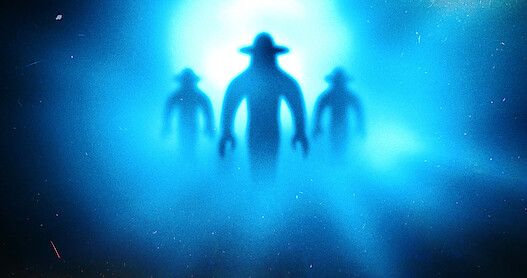



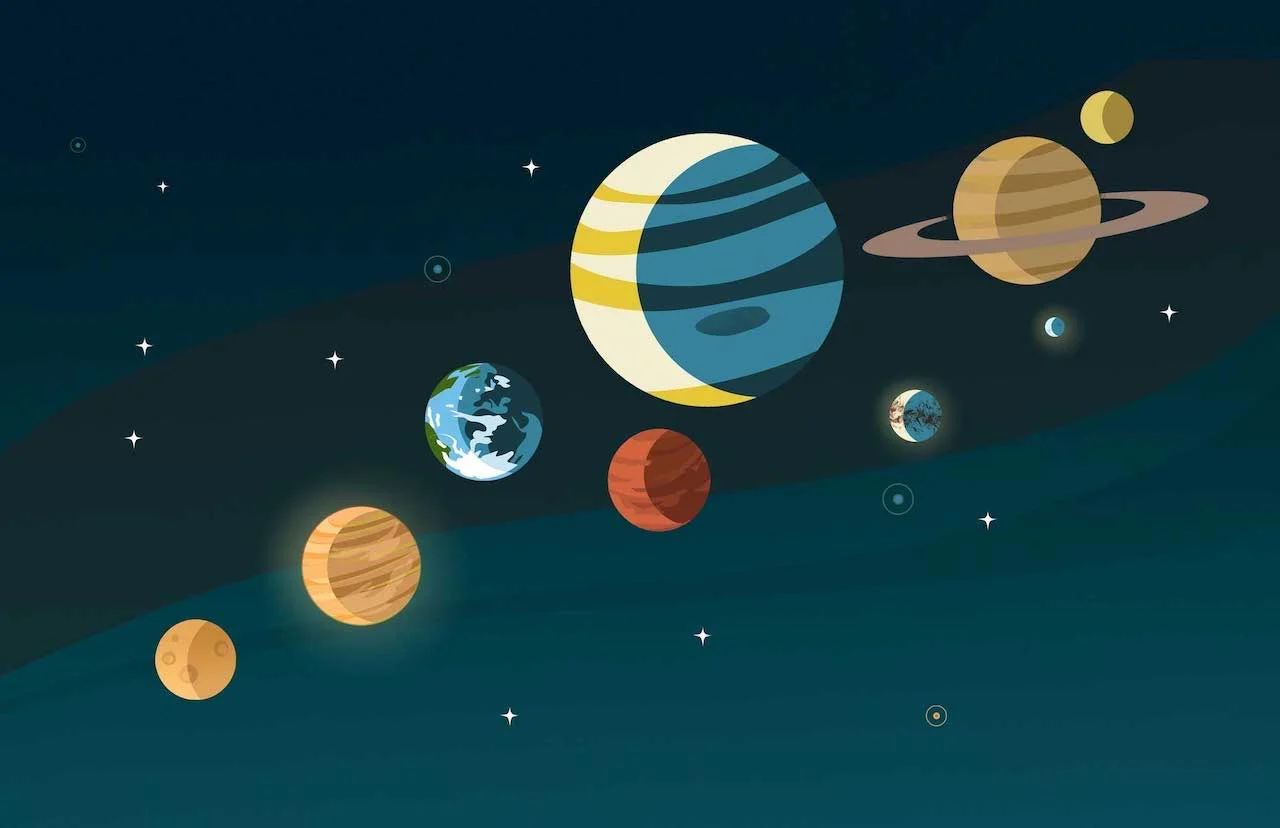




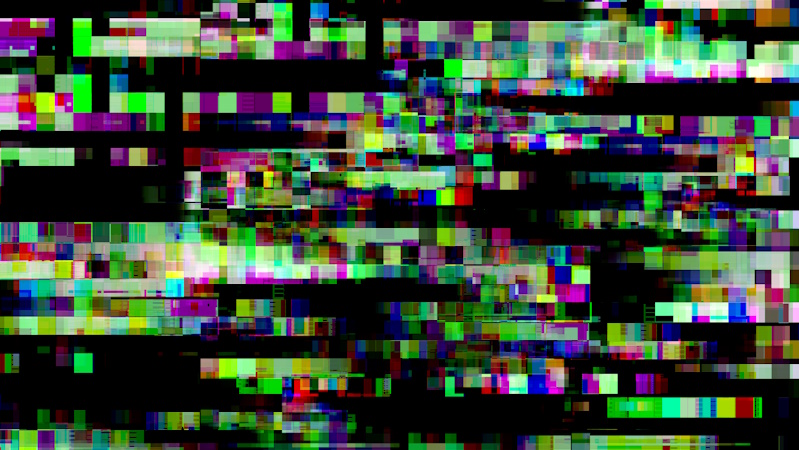









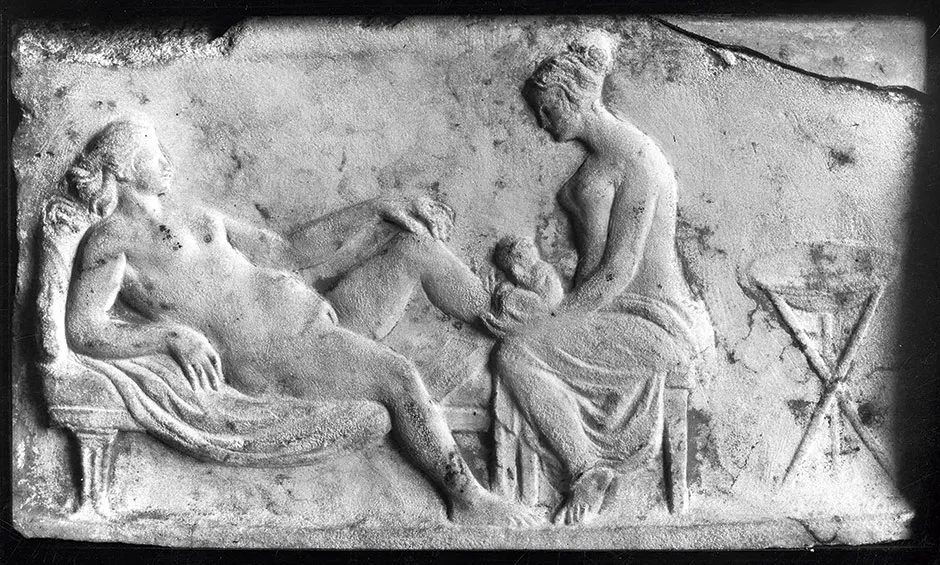

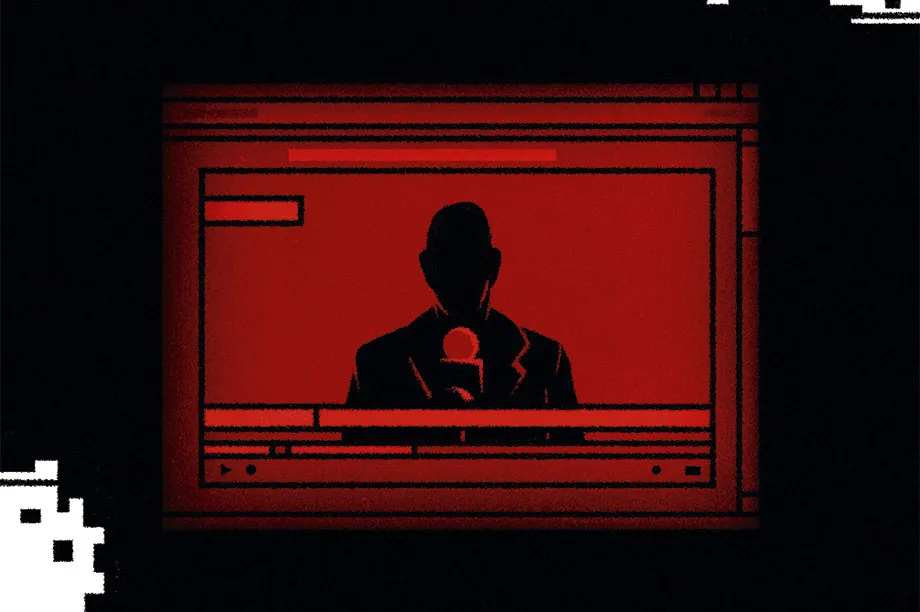
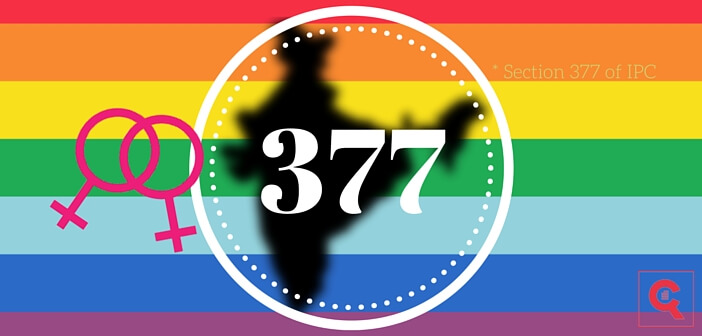




0 Comments